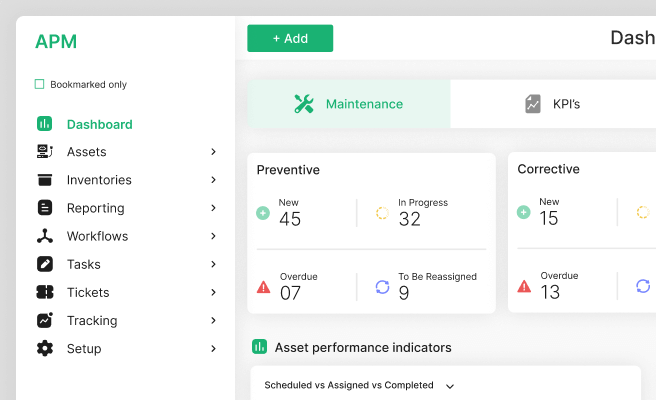Error Prevention
<p>Error prevention in digital product design is about anticipating potential user mistakes and proactively addressing them to create a seamless experience. This concept is crucial for ensuring that users can smoothly interact with a digital product without facing unnecessary frustrations or making errors that could impact their overall experience.</p>
<p>In the climate tech sector, where products often involve complex data and interactions, error prevention becomes even more critical. A well-designed system can significantly enhance user satisfaction and efficiency.</p>
<p>For example, a carbon tracking app must ensure that users input data accurately to provide precise carbon footprint calculations. Implementing error prevention strategies helps maintain the accuracy and reliability of such applications, which is vital for users aiming to reduce their environmental impact.</p>
<h2>Principles of Error Prevention</h2>
<p>Several principles guide effective error prevention in digital product design:</p>
<ol>
<li><strong>Clear Instructions:</strong> Provide users with unambiguous instructions and feedback. This helps them understand how to use the product correctly and what to do if they encounter an issue.</li>
<li><strong>Constraint Usage:</strong> Limit the user's actions to prevent them from making mistakes. For instance, if an app requires a date input, use a date picker to ensure the correct format.</li>
<li><strong>Confirmation Dialogs:</strong> Use confirmation dialogs for critical actions. This gives users a chance to review their choices before proceeding.</li>
<li><strong>Real-Time Validation:</strong> Validate user inputs in real-time to catch errors as they happen. For example, show an error message if the user enters an invalid email address.</li>
<li><strong>Undo Functionality:</strong> Provide an option to undo actions, allowing users to easily correct mistakes without significant consequences.</li>
</ol>
<h2>Real-World Examples</h2>
<p>Real-world applications of error prevention can be seen in various domains:</p>
<p><strong>Google Forms:</strong> Google Forms is a great example of real-time validation and constraint usage. When creating a form, the tool ensures that users provide inputs in the correct format by offering dropdown menus, checkboxes, and date pickers. Additionally, it provides real-time feedback if a required field is left blank, guiding users to correct their mistakes immediately.</p>
<p><strong>Airbnb:</strong> Airbnb uses clear instructions and confirmation dialogs effectively. When booking a stay, users receive clear prompts about each step of the process. Confirmation dialogs appear before finalizing a booking, allowing users to review their details and avoid accidental reservations.</p>
<h2>Challenges in Error Prevention</h2>
<p>Implementing error prevention strategies can be challenging:</p>
<ul>
<li><strong>Balancing Constraints and Flexibility:</strong> Over-constraining user actions can lead to frustration, while too much flexibility can result in errors. Striking the right balance is key.</li>
<li><strong>Identifying Potential Errors:</strong> Predicting all possible user errors requires a deep understanding of user behavior and thorough testing.</li>
<li><strong>Maintaining Usability:</strong> Error prevention measures should not compromise the overall usability and user experience of the product.</li>
</ul>
<h2>Overcoming Challenges</h2>
<p>To overcome these challenges:</p>
<ol>
<li><strong>User Testing:</strong> Conduct extensive user testing to identify common errors and refine error prevention strategies. Observing real users interact with the product can reveal unforeseen issues.</li>
<li><strong>Iterative Design:</strong> Adopt an iterative design process where error prevention mechanisms are continuously tested and improved based on user feedback.</li>
<li><strong>Clear Communication:</strong> Ensure that error messages are clear, concise, and actionable. Users should understand what went wrong and how to fix it.</li>
</ol>
<p>Error prevention is a vital aspect of digital product design, especially in sectors like climate tech where precision is paramount. By implementing effective error prevention strategies, designers can create products that are user-friendly, reliable, and efficient, ultimately enhancing the user experience and achieving their desired outcomes.</p> <p>We’re using the power of design to increase the adoption of climate technologies and innovation. View our work in climate to know more on how we can support your vision. <a href="https://www.whatifdesign.co/climate" style="color:#2896FF; text-decoration:underline;">View our climate projects</a>.</p> <p>Increase user engagement that converts your demos into sales. Optimise your UX strategies with our audits.
<p>Fill out the <a href="https://tally.so/r/n97pxQ" style="color:#2896FF; text-decoration:underline;">UX Audit form</a> to get started. Ready to discuss your needs? <a href="https://cal.com/akhilak/what-if-design?duration=25" style="color:#2896FF; text-decoration:underline;">Book a consultation call</a> with us today.</p></p>

Let's scale your impact with great design.
Free consultation, no sales pitch
Thank you! Your submission has been received!
Oops! Something went wrong while submitting the form.
Let’s talk
Nothing great is built alone.
Let’s connect about your vision, our work and how we can collaborate.
Get in touch

